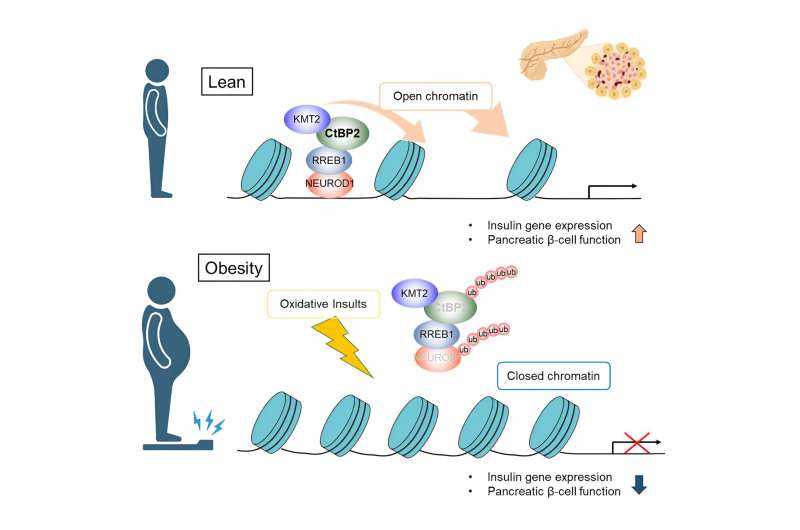This article has been reviewed according to Science X's editorial process and policies. Editors have highlighted the following attributes while ensuring the content's credibility:
fact-checked
peer-reviewed publication
trusted source
proofread
Unraveling the mechanism behind obesity-induced pancreatic β-cell dysfunction

Obesity not only increases the risk of metabolic syndrome-related diseases, such as diabetes, fatty liver, and atherosclerosis, but also remarkably impacts seemingly unrelated conditions, such as cancer, psychiatric disorders, and immune function. To understand this wide range of diseases and develop therapeutic approaches for the same, it is important to elucidate the mechanisms by which various organ and cell functions are impaired in the pathogenesis of obesity.
Moreover, the function of pancreatic β-cells is known to be progressively impaired during obesity. Furthermore, impaired insulin secretion is causally associated with the development of diabetes mellitus. However, previous studies primarily focused on mechanisms specific to pancreatic β-cells, thereby overlooking potential factors that commonly affect the whole body in obesity-related diseases. Thus, understanding the common factors in obesity will facilitate the development of effective therapeutic strategies.
The research group from the University of Tsukuba has extensively studied the role of CtBP2 protein—a sensor molecule that assesses the quality and quantity of metabolites—in obesity. In the present study, published in Cell Reports, they revealed that obesity-induced oxidative stress in pancreatic β-cells causes the degradation of CtBP2 protein, which results in the inability to maintain pancreatic β-cell function, thereby leading to decreased insulin secretion and diabetes mellitus.
Overall, the results of this and previous studies indicate that the loss of CtBP2 function in obesity plays an important role in the development and pathogenesis of metabolic syndrome. Hence, targeting CtBP2 may be a potential therapeutic strategy for obesity-related diseases in the future.
More information: Motohiro Sekiya et al, Loss of CtBP2 may be a mechanistic link between metabolic derangements and progressive impairment of pancreatic β cell function, Cell Reports (2023). DOI: 10.1016/j.celrep.2023.112914





















